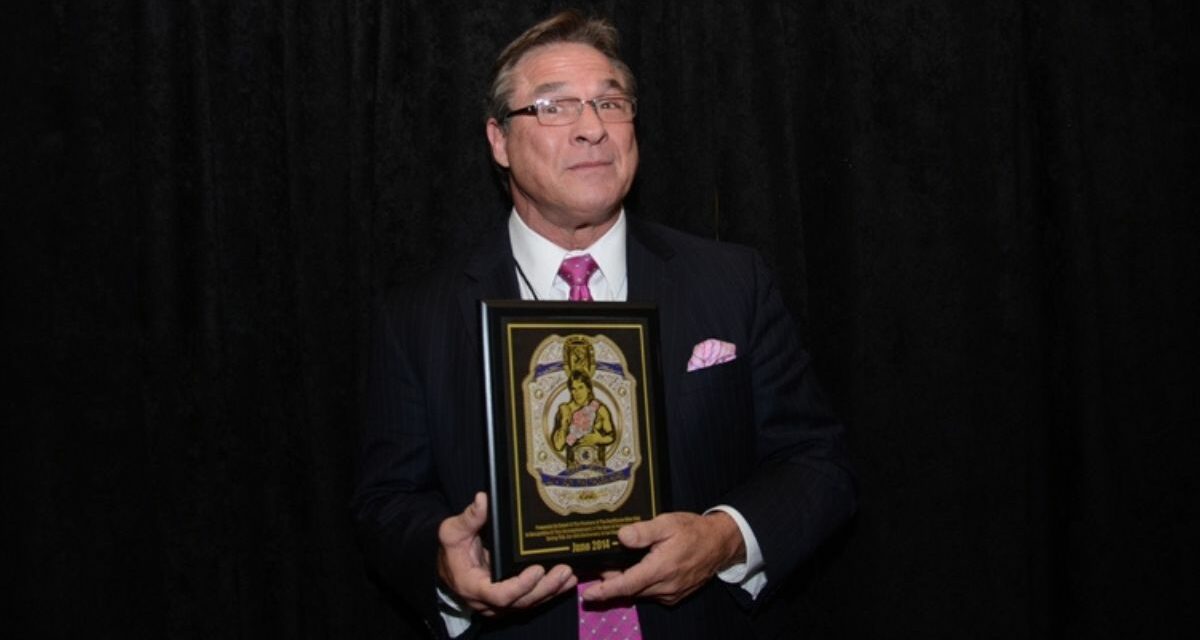Back in the day, nobody broke into the wrestling business without knowing someone.
“It was such a close tight-knit fraternity that you had to have a connection or were related to somebody,” Terry Taylor recently told SLAM! Wrestling. “And I had a friend who I knew in college who broke into the business, and he was in a match one night in West Palm Beach, and he took me back to the locker room with him and introduced me to all my heroes.
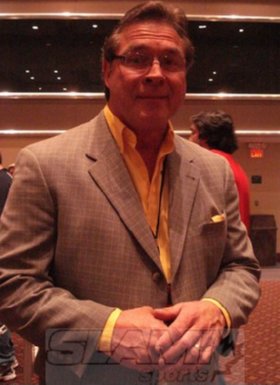
Terry Taylor in 2011. Photo by Bob Kapur
“I mean, I was a huge wrestling fan, and Steve Musulin (Steve Travis) introduced me to Dusty Rhodes and Jack Brisco and Terry Funk and Pat Patterson. And how they didn’t know I didn’t belong was a miracle. They were all very nice to me and I guess they thought I was a wrestler. Then Steve said, ‘Why don’t you come to TV on Wednesday in Tampa?’ And I did. That’s when (promoter) Eddie Graham tapped me on the shoulder and said, ‘Have you got your stuff, kid?’ I’d never had a match and didn’t have any lessons, so I bought a pair of boots and tights and my first match was on TV against Bugsy McGraw.”
That was back in September 1979, and for a kid who grew up watching Championship Wrestling from Florida, Taylor has come a long way, carving out a 35-year career in the business as a wrestler, a director of talent relations, and now a trainer.
And on June 4, Taylor will be presented the prestigious Iron Mike Award at the Cauliflower Alley Club Reunion in Las Vegas, Nevada, the top award in the professional wrestling business.
“I feel tremendously honoured,” said Taylor. “You see, I was kind of a naive and innocent kid who got so caught up in the superhero part of wrestling. I just loved it and still do today. Championship Wrestling from Florida was awesome with Gordon Solie doing the commentary. I mean, Dusty was on top and they would build up these heels who were unbeatable. They’d beat up Dusty and then Dusty would get mad. And ‘The American Dream’ would cut that incredible promo, and the next week he’d go fight these heels and he’d win. And I’d be sitting there grinning from ear to ear and loving every minute. You had all those fans in the Armory with so much intensity, and the chemistry the wrestlers had with the people was unforgettable.”
Taylor still chuckles when he reflects on the serendipitous way he broke into the business. “When I worked with Bugsy, I thought they were going to run me out of there and beat me up and have me arrested for impersonating a wrestler,” he said. “But instead, they handed me $275 cash and told me to come back next week. It was better money than I was making, which was $50 a week at a restaurant. So I went back and they were very kind to me, and Dusty was the booker and he was nice. My deal was to work with other guys, I was a decent looking young guy that had a fairly okay body and I got beat up good, and at that time there was a role for that.”
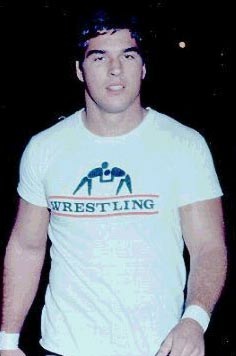
Wrestling was always on Taylor’s mind.
One of Taylor’s most vivid memories from his early days in Florida was the training he received from Eddie Graham. “Eddie Graham got in the ring with me one time and showed me how to do a headlock,” recalled Taylor with a laugh. “And Eddie was asking me about this one time where he saw me waving my arms around when a guy was choking me. And he said, now how did you do that? So I waved my arms around because I thought he was going to tell me how great I was, and he just grabbed me as hard as he could by my throat and crushed my windpipe. And immediately, both my hands grabbed his and he said, ‘That’s how you sell a choke.’ And I never forgot that.
“I was only in Florida three months, though,” said Taylor. “Jerry Brisco said, ‘If you don’t get out of here, you’re just going to end up doing jobs on TV and nothing else.’ And he said, ‘Let me make a call.’ So he got me booked in Knoxville, Tennessee, and I drove up to Knoxville and borrowed $400 from my dad and spent the night in my car and wrestled on Friday night. Then I did a TV match Saturday morning, and then I started wrestling full time then, and I guess that was the beginning of 1980.”
Taylor’s first feud was with Dutch Mantell (Zeb Colter in WWE). “Let me just say now, I’m sorry Dutch for all the potatoes, and I’m sorry I was so rotten, and I’m grateful for how good you treated me,” said Taylor. “He and Dennis Condrey were my first two opponents there, and they really taught me, they were great. Dutch was a great talker too and he was in great shape.”
In the early ’80s, Taylor would shuffle between Knoxville, Kansas City, and Atlanta, honing his craft and winning tag team gold, TV titles, and national championships throughout the Central States and Georgia.
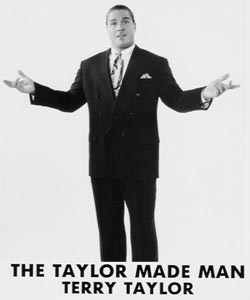
“I worked for Jerry Jarrett and Jerry Lawler for about three years in Nashville, Tennessee, before I went to work for Bill Watts in Oklahoma in ’84,” said Taylor. “And that’s where I think I really came into my own as a worker, when I turned heel in Mid-South against Chris Adams. Because I had been led most of my career by heels that were really good, like Dutch and Dennis. When I was a good guy, I won more matches than I ever did as a bad guy, and had no idea how I did it. And it’s because these guys were leading me through it, and when it was over the fans were chanting my name and I didn’t know how it happened. And I wanted to learn the other side of it so I could turn heel. I wanted the people to hate me, because getting them to like you is hard, but getting them to hate you is even harder. It was a good learning experience.”
And developing a believable character can take time, said Taylor.
“I think we all borrow from people that we admire and then we start taking bits and pieces from their work,” he explained. “And then we start patch working those traits into who we are, then as we get better and more confident, we start making these things more our own and develop our own style until we figure out who we are.”
One of Taylor’s most memorable feuds in Mid-South was against the nefarious Russian, Nikolai Volkoff.
“What had happened was, Bill Watts was the booker and he was big, so he liked big guys, and he had drawn big money wrestling killer heels. But you know, Bill’s territory was down, even though he had Junkyard Dog, who the people loved. And something was missing. So he hired Bill Dundee and he brought in the Memphis flash and the innovation and all that, and made good-looking young smaller guys babyfaces, and had big killer looking dudes as heels. The exception to the rule was ‘Hacksaw’ Jim Duggan and JYD, but he started getting heels like Nikolai Volkoff.
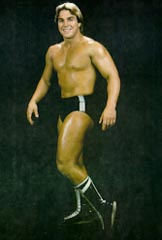
Stylin’ Terry.
“And the thing is, Nikolai beat everybody with this backbreaker where he’d pick you up over his head and sit you on top of his head and drop you down into a backbreaker. And he beat everybody — Magnum T.A., JYD, Duggan — so there was nobody left, and the territory was hurtin’. So they said, ‘Well we got to create somebody.’ And I came in, I guess in January and we did it where Nikolai challenged any American to face him. Then I went out and he put me over in about two minutes. Barry Darsow (Crusher Darsow) came in I made a little comeback on him, and they cleared out and left the ring to me. I showed a little bit of fire, and the people bought it and I became the guy that they’d beat up but in the end would still win. Then the Rock’n’Roll Express came in and they started getting over, and Butch Reed, Magnum, and the Midnight Express. I mean, we had a great crew.”
It was in Mid-South where Taylor would finally have a chance to challenge Ric Flair for the NWA World Championship.
“I think we had five or six matches, and Flair was awesome. He was the best,” said Taylor.
Taylor would go on to become one of Mid-South’s biggest stars when the territory was renamed the Universal Wrestling Federation (UWF) in 1986.
“At that time, we were going nationwide,” he said. “But when you’re only in five states, it’s very specific what those people want. And when you start branching out to the Southeast, the Northeast, the Mid-West, there’s a different audience in every area. If you go to Chicago they like Dick the Bruiser. You go to the Northeast and they like Bruno (Sammartino). You go to Florida and they like Dusty. And then Atlanta, they like Tommy Rich. I mean, this was all a long time ago but the people made the big stars in each territory. And when Mid-South transitioned to UWF, it had to be more of a nationwide brand. And I think the biggest difference between Mid-South and the UWF is, it was no longer a territory, but rather a nationwide brand.”
One of Taylor’s most memorable matches in UWF was his victory over “Mad Dog” Buzz Sawyer for the UWF TV Title.
“I first met Buzz Sawyer in Georgia,” recalls Taylor. “I missed my starting date by a week and, back then you didn’t have a cell phone if you were going to miss a date, everything was a landline. And if you missed a date they found someone else. And by God’s grace Ole (Anderson) gave me a second chance and I went back and wrestled Buzz.
“I’ll never forget, he was eating hot dogs on the way to the ring and here I am, who hadn’t eaten since three in the afternoon. So we get out there and we’re working, and he just finished eating his hot dogs and he’s leap frogging and dropkicking, and getting heat and getting intense, and barking and stomping. Then he just looks at me and goes, ‘Punch me in the stomach.’ So I did and he turns, sticks his head over the top rope and throws up a ton of hot dogs. He turns around and says, ‘Keep coming.’ And I’m like, if this guy is going to eat 10 hot dogs and say keep comin’, I guess I better.
“And he never missed a beat — the dude was awesome. I never had a problem with him the way other guys did. I don’t know if he didn’t see me as a threat, or if I was too far down the totem pole but he was fun to work with and could do incredible stuff. And he could take a dropkick and dive underneath the middle rope out onto the floor backwards. And he never killed himself. To this day I’m still not sure how he did it. He was a gifted guy. As you know, creative and talented people sometimes have demons and he was no exception. But that shouldn’t diminish how great he was.”
In early ’88, Taylor would leave UWF for World Class Championship Wrestling where he turned on his partner Chris Adams in a violent and bloody feud.
“World Class was dead and we were starving. It was tough,” said Taylor. “Here’s the story of how I got into WWF. At the time, my wife was pregnant and she was working two jobs and we had a seven-year-old son, and I was working three days a week making $75 or a $100, which doesn’t cut it. And my wife was working herself to death being pregnant and working two jobs, so every Friday at noon I’d call Pat Patterson.
“I’d leave a very upbeat message every time that went like this: ‘Mr. Patterson, this is Terry Taylor. I’m not asking for a guarantee, I’m just asking for an opportunity, please let me show you what a great employee I can be, and if you don’t think that I have talent or if you don’t think I’m worth the time, I’ll shake your hand and say thank you for the opportunity and never call you again.’
“And I did that every Friday at noon for nine months and finally he answered the phone because I left messages every time. And he goes, ‘If you promise to never call again, come to Ottawa, Canada on Monday.’ And that’s how I got my start.”
For years, rumours have floated around that Taylor was originally considered for the “Mr. Perfect” gimmick, before WWF branded him as The Red Rooster.
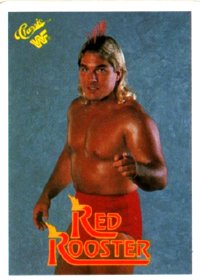
“No, that’s completely untrue, and I’m really glad for the opportunity to set this straight,” said Taylor. “It’s like that deal where you whisper a secret in second grade to one person and you repeat it around the room, and then you hear what the final person says and it’s nothing like the original.
“So to make a long story short, somebody said to me one time — because they didn’t like The Red Rooster character and we were talking about it — you know, you and Curt Hennig debuted the same day, you as the Rooster and him as Mr. Perfect. And all I said was, ‘What would have been different in our careers had he been the Rooster, and I had been Mr. Perfect?’ And somehow that took off, with me saying that I was supposed to be Mr. Perfect. As everyone knows, there is only one Mr. Perfect and that was Curt Hennig. Nobody else could have done it like he did. He was Mr. Perfect. Curt was the man.”
As for The Red Rooster character, Taylor was less than enthused.
“I didn’t understand it,” he said. “I had gone from being a heel who had turned on Chris Adams, to bleeding every night and getting heat that was very believable, to a territory of Akeems and Hillbillies and Macho Men and Hulks. And Vince said to me, ‘We need to give you a character that makes you unique and I’ve got the one for you.’
“And I just didn’t get it. That was one of those things in life where, if I would have done what was best for my employer, instead of what I thought was best for me, I might have still been The Red Rooster and gotten a 10-to-15-year run out of it. But I was immature and I didn’t get it. They were good to me, I mean, they gave me opportunities. Heck, they gave me Bobby Heenan, and I worked with Curt. What’s better than that? I didn’t see it at the time and a year later I quit.”
By late ’90, Taylor would debut in WCW, challenging Arn Anderson for the World TV Championship.
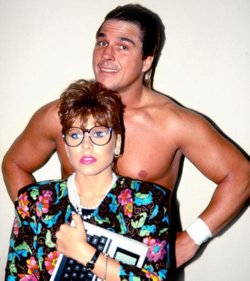
Terry Taylor and Alexandra York (later known as Terri Runnels)
“The deal with WCW is I got to work with guys like Arn and Flair and Bobby Heenan, and all these guys that were so talented and I didn’t have to worry about them beating me up or hurtin’ me,” said Taylor. “And they were just so good at what we did, so I got to just go out there and have fun. There was no pressure to draw a house. We were never in the main event so our job was to just go out and entertain the people for 15 or 20 minutes and I was grateful. Ole and Dusty were booking that, and I had a great run — middle to underneath. And I was a six-man champion and a tag champions a couple times, and it was lots of fun wrestling for WCW, at that stage of my career.”
Taylor would wrestle the last official match of his career in WCW in August of ’94. “It was a Saturday Night thing on TBS with me versus Flair,” he recalled. “It was a fun match and Sherri Martel was there. I remember after Ric beat me, (Hulk) Hogan came out and they got into a big fight.
“I got released after that match and for about six or eight months I wasn’t doing anything, and I didn’t like it. I started working at the Power Plant which is kind of weird, here’s a guy who has never had a lesson teaching others how to do it.
“With all the humility and hopefully no arrogance, I don’t understand a lot of things in this world, but the wrestling business, I do. I understand how a match should be structured, how somebody should perform, what should be done when.”
When Kevin Sullivan stepped into the role of booker for WCW, Taylor was hired to be his assistant.
“By God’s grace, Kevin was such a good mentor to me,” said Taylor. “I mean, he talked to me like I was stupid most of the time, which I probably was, but he taught me. ‘Brotha,’ he’d say to me, ‘Why would you do that, brotha? No, that’s not why you do it, you do it because of this.’
“And he told me the one thing that changed my life as far as creative goes, and he said, ‘If you can’t book the match, the finish and the return, then don’t book the match.’ And he’s right. How many run-ins happen because nobody thought that out? A marquee match on paper, you have to be able to have a compelling or satisfying or controversial finish, and then you have to figure out what you’re doing next week.
“Kevin was so great. He taught me how to talk to the talent, he taught me on how to think about the business in the way a creative writer would, and not as a fan. Because fans always want to see the good guy win. Like in Bruce Lee movies, you knew Bruce Lee could beat everybody up, but he got humiliated and beaten up and thrown around, and you kept waiting for him to get mad and make it right. Rocky didn’t win the first match. So when the good guy finally gets mad and decides they’re going to stand up, then they beat the crap out of everybody. And that’s what you have to learn as a creative writer, is to set the heat, and nobody wanted to do the heat but that’s how you get the territory hot. You get people actively angry and involved emotionally and have a savior, and it always works.”
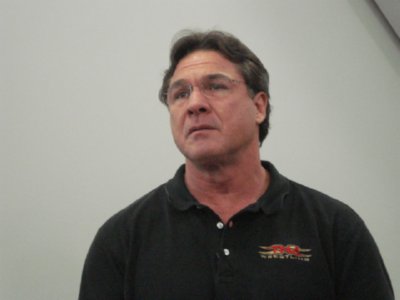
Taylor during his TNA days. Photo by Bob Kapur
After WCW, Taylor was hired by TNA in 2003 and worked as a road agent, trainer, interviewer, and eventually, Head of Talent Relations. Comparing TNA to WWE, he says, is like apples and oranges.
“Raw is a unique creature unto itself, and it’s been on for over a thousand shows,” said Taylor. “If you think about every television show on TV, they have a life cycle. If it’s successful, it starts, gains momentum, it gets red hot, it rides that wave as long as it can and then it fades away. And if TNA had been completely unique and not copied the WWE formula, could they have done a better job of creating their own stars? ‘Cause all they really created was A.J. (Styles) and Abyss. Samoa Joe was from Ring of Honor, but got national prominence from TNA.
“So there’s all sorts of things that people could say. It was a very good company that was originally this classic ECW-esque underdog, where a bunch of people banded together because they believed that there could be an alternative to the WWE juggernaut. And a bunch of us, (Vince) Russo, me, Dixie (Carter), Jeff (Jarrett), we all worked together, and we’re human beings so there was conflicts and drama and emotions and all that, but we all had a vision. And the company started doing better to where it got a television slot on Spike, and things were going good. I got fired three years ago, May 20th. So when we were still doing it I thought it was good, I guess I’m always going to defend the time I was there. But I thought there was a bunch of good people in TNA working hard for the right reasons, trying to give wrestling fans an alternative and give the talent a place to work and grow.”
Taylor is appreciative to have worked for so many promotions over the years, often at the height of the company’s success.
“Listen, I’ve been very grateful to be in the middle of a lot of great stuff in the business, from working with Jarrett and Lawler in the early ’80s to Watts and Dundee in Mid-South in the mid-’80s. And then I went to the WWF in ’88, and then WCW and then I started writing for TV. I mean, I had a great run.
“I would never be so arrogant to think I had anything to do with the success of those companies, but if you think about it, I was there for the first Nitro, the first Thunder, the first Raw, the first Smackdown. I was working for WCW when Sting first came down from the rafters. I was in the WWE for the Attitude Era — the Austin/McMahon era. From Big Show coming up through the bottom of the ring and the Undertaker turning heel to Austin and Stephanie as the higher power. I mean, I was in WCW with Goldberg as part of the writing team. By God’s grace I’ve been blessed to be in some really cool places at some really phenomenal times.”
These days, Taylor is working a dream job for the WWE at the WWE Performance Centre in Orlando, Florida. “It’s a 30,000-square-foot facility,” began Taylor. “It has seven rings, a 10,000-square-foot state-of-the-art workout facility with artificial turf and machines that I’ve never seen before, with a world-class trainer that’s a disciple of Joe DeFranco, who is like this guru. We have seven of the best coaches in the history of wrestling. We have a full medical facility, and an editing suite, where we can do interviews in a room, record it and watch it right back.
“We have a video library that connects to Connecticut, everybody here gets on the Network for free, and we train 80 to 100 young talents who are the best of the best, in every aspect of athletics from football to basketball to soccer to karate. We have fitness models. There’s nobody who would be excluded if the company thought they could contribute. And they have to go from class to class, beginner, intermediate, advanced, all the way up and we get them ready for Raw.”
With a great sense of pride in his voice, Taylor raves about a recent six-man tag team main event on Raw, where every wrestler was NXT alumni and trained at the WWE Performance Centre.
“You’ve got Big E, the whole Shield, the Wyatts… now there’s Adam Rose, Paige, and Bo Dallas is getting ready to start,” he said. “There’s a bunch of the talent up there now, and that’s the life blood of the business, is new talent. And we’ve got 10 in the pipeline now, and when the company has a spot for them, they’ll move up into the main event system and keep giving the audience new, fresh, quality talent.
“I am so grateful to be doing what I’m doing. They’ve allowed me the opportunity to teach the next five or six talent, so whoever’s getting ready to go up, they get in a class with me in an intimate setting and we teach them how to be WWE superstars. We teach them how to act in the ring, how to do promos, how to develop a character, how to wrestle in the ring that compels an audience and suspends their disbelief. And it’s what I love doing. It’s fun.
“In my wildest dreams, I never imagined I’d have a job where I’m treated so well, and I get to work with some of the best young people in the world that I get to watch go out and become big stars. Like Bray Wyatt, he’s going to be a huge star. Wait ’til you see him once he’s 10 years in. He’s a great guy, everyone of the guys in the Wyatt Family and Shield are hardworking, good people, that are working to make themselves and the WWE better. It’s a phenomenal time to be in the WWE.”
And it’s a phenomenal time to be Terry Taylor, he says.
“I’m so blessed. And to be receiving the Iron Mike Award this June at the Cauliflower Alley Club, I feel so incredibly fortunate. Imagine, this amazing 35-year career I’ve had all started when Steve took me back to the locker room one night in West Palm Beach to meet all my heroes.”
TOP PHOTO: Terry Taylor at the 2014 Cauliflower Alley Club banquet in Las Vegas. Photo by Brad McFarlin
RELATED LINKS
